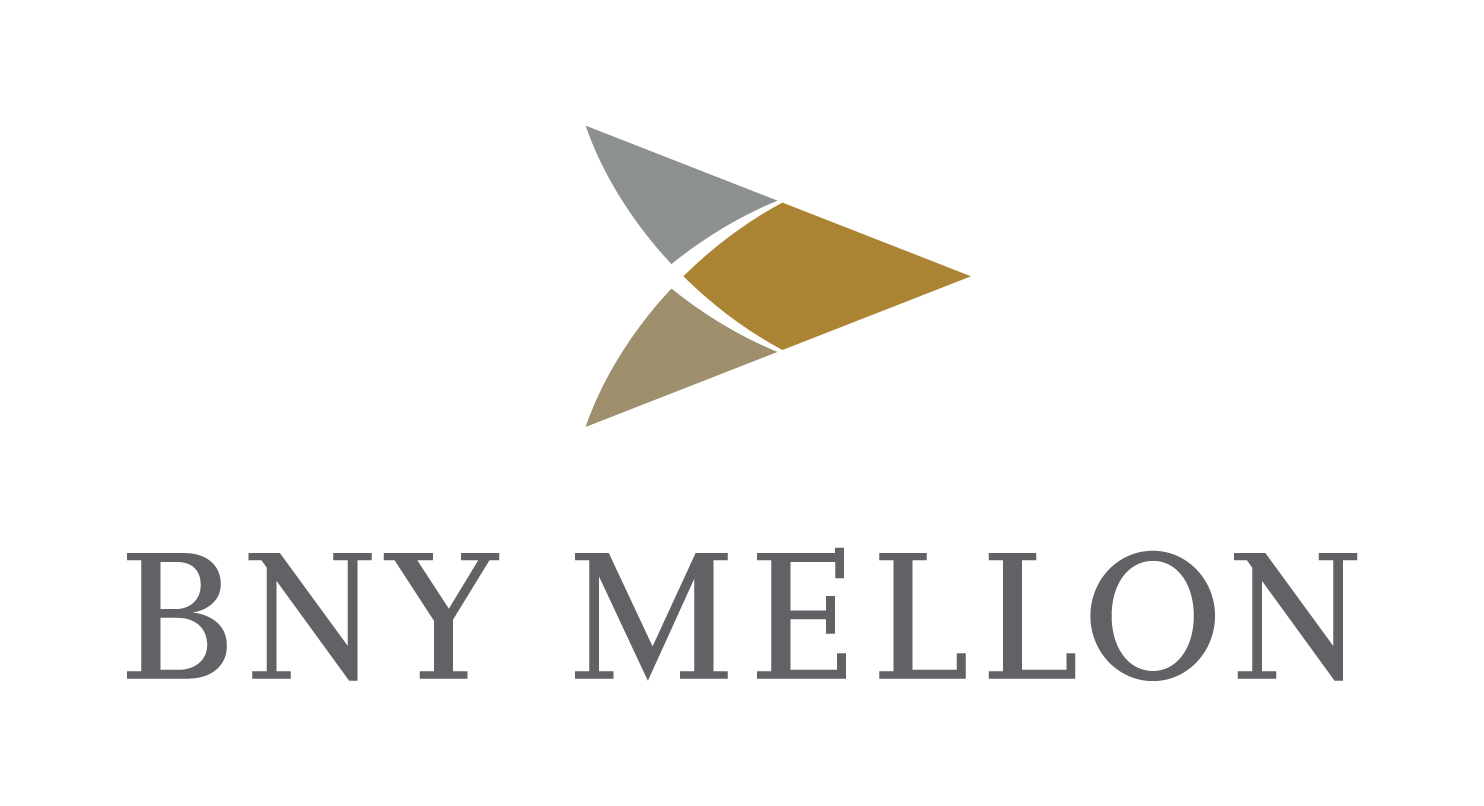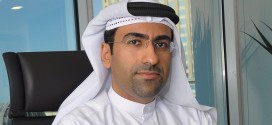Almost all the market players in the Islamic fi nance industry complain about the lack of a truly international and well-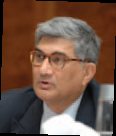 structured liquidity management scheme to meet the shortterm surplus placement of some and the funding needs of other Islamic fi nancial institutions (IFIs) and those with Islamic banking windows.
structured liquidity management scheme to meet the shortterm surplus placement of some and the funding needs of other Islamic fi nancial institutions (IFIs) and those with Islamic banking windows.
In reality, as Rafee haneef, managing director, global markets at hSBC Amanah, emphasises, there is no shortage of liquidity as such. To him the Tawarruq (Commodity Murabaha) instrument is ideal albeit there is always a credit risk, but the problem is that there is no consensus of Shariah advisories over its use either in liquidity management or in cash management.
Nevertheless, the issue remains a major bottleneck of the global Islamic fi nance industry. Indeed, attempts to facilitate such schemes by central banks and IFIs have had limited success because of the lack of suitable Shariah-compliant instruments and the weaknesses in the supporting infrastructure needed for active Islamic money markets.
One of the major challenges especially would be to identify suitable assets that can be the basis for the underlying transactions and that are tradable on a cross-border basis with full recourse to the law of the land. hitherto, the main liquidity management mechanisms have been commodity Murabaha trades through LME (London Metals Exchange) warrants and, more recently, through trades based on palm oil contracts on the Bursa Suq Al Sila’ Platform.
But in the past weeks several new initiatives have been announced or are in the pipeline. In October, in Kuala Lumpur, 11 central banks and two multilateral organisations signed the articles of memorandum for the launch of the International Islamic Liquidity Management Corporation (IILM), which has been facilitated by the Council of the Islamic Financial Services Board (IFSB), whose mandate is to set prudential and supervisory standards for the global Islamic finance industry.
Malaysian Prime Minister Mohd Najib bin Abdul Razak, who witnessed the launch, emphasised that the ultimate aim of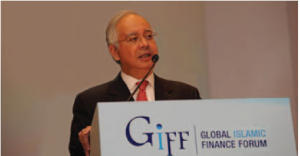 IILM “is to enhance international integration of the Islamic money market and capital markets and to be better equipped to face any liquidity crisis. This breakthrough will help take Islamic finance to a higher level of development”.
IILM “is to enhance international integration of the Islamic money market and capital markets and to be better equipped to face any liquidity crisis. This breakthrough will help take Islamic finance to a higher level of development”.
The IILM had its first board meeting subsequently in Kuala Lumpur during the Global Islamic Finance Forum in October, and will meet again in Jeddah in December. The CEO of IILM has also been appointed and the corporation should start effective operations in the first quarter of 2011.
According to the IFSB, the IILM “will issue high quality financial instruments, (primarily Shariahcompliant papers such as Sukuk) at both the national level and across borders, in an integrated manner, thereby enhancing the soundness and stability of the jurisdictions in which they operate”. These would be only AAA-rated papers issued by sovereigns, quasi-sovereigns and a selected number of major corporates.
‘World-class’ confidence
Currently, the IDB’s US$3.5bn Islamic trust certificate programme is the only institutional AAA-rated paper, apart from one or two other smaller issuers such as the International Finance Corporation (IFC), which has prompted some market players to question the availability of a large enough pool of AAA-rated assets suitable for securitisation. They would have preferred to see a basket of selected commercial papers with varying ratings, which would have pushed the average rating of the basket to investment grade papers with a rating of BBB.
IILM sources, however, are confident that the corporation would build up a world-class pool of AAA-rated sovereign, institutional and corporate assets against which a series of papers would be issued through a series of special purpose vehicles (SPVs) respectively. The aim is to develop IILM into the definitive global Islamic money market mechanism akin to what the IFSB has achieved in setting prudential and supervisory standards for the global Islamic finance industry.
The founding participants of IILM include the Saudi Arabian Monetary Agency (SAMA), the Central Bank of Qatar, Bank Negara Malaysia, the Central Bank of the UAE, the Central Bank of Iran, Bank of Indonesia, the Central Bank of Sudan, the Central Bank of Nigeria and the Central Bank of Turkey. There are two founding participants from the non-Muslim countries in the Banque Centrale du Luxembourg, the only EU regulator to sign up, and the Bank of Mauritius. The two multilaterals are the Islamic Development Bank (IDB) and its private sector funding arm, the Islamic Corporation for the Development of the Private Sector (ICD).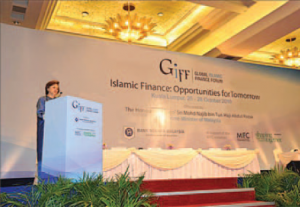
To Dr Zeti Akhtar Aziz, Governor of Bank Negara Malaysia, the launch of IILM is a milestone achievement, which she maintained would enable more effective liquidity management not only for the Islamic financial institutions but also for the management of Islamic financial portfolios. Dr Zeti hailed the IILM as a demonstration of international collaboration among central banks. “The greater collaboration among regulators seen in this decade cumulatively serve to contribute towards the continued resilience of the global Islamic financial system,” she added.
Sources close to the IILM confirm that the corporation has had a robust feedback since its launch from other central banks, monetary agencies and multilaterals both from the Muslim and non-Muslim countries who are keen to join. This augurs well for the short-term future of IILM, which is headquartered in Kuala Lumpur and has an authorised capital of $1bn, of which $75m has been paid up, with SAMA and Bank Negara Malaysia each subscribing the maximum $10m of the equity and the remaining 11 participants subscribing $5m each.
At the same time, the Jeddah-based IDB is working on launching a mega-bank, which industry sources stress will take the form of an International Islamic Inter-bank Bank (IIIB), with a capital of at least $2bn initially aimed at government, institutional and corporate investors.
The capital may be increased by another $1bn down the line which would then be sold down at an ultra-retail level to ordinary Muslim and other interested retail investors. Th e core objective of IIIB would be to provide liquidity management to the global Islamic fi nance industry and also to act as a “Lender of Last Resort” for the industry.
Duplication issue
The question of potential duplication between IILM and IIIB may arise although complementarity is more likely given the steady growth of the global Islamic fi nance industry, which has estimated assets under management totalling $1.2 trillion with the potential to rise to $4 trillion over the next few years.
Recently, the Bahrain Financial Exchange (BFX) also launched what it claims is the fi rst electronic Shariah-compliant Murabaha platform, e-Tayseer on the Bait Al-Bursa.
There are several implications relating to an international Islamic interbank system.
Professor Rifaat Abdel Karim, the Secretary General of IFSB, emphasises the need for the development of a systemic liquidity infrastructure for the Islamic fi nancial services industry, as this constitutes one of the key prerequisites for sustaining fi nancial stability. “We need to step up our eff orts to foster the development of liquid sovereign Sukuk markets, Islamic interbank money markets and more effi cient tradable Shariah-compliant fi nancial instruments,” he urges.
Professor Volker Nienhaus, who sits on the Council of INCEIF University in Kuala Lumpur, warns that “proponents of an Islamic system propagate profi t-and-loss-sharing modes of fi nancing as the ‘true’ Islamic alternative. Such modes, however, are diffi cult to apply in short-term fi nancing and applied to medium to longer term fi nancing, they usually imply a considerable maturity mismatch”.
Without an effi cient interbank market and without support from central banks, he adds, “market forces have driven Islamic banks towards an increasingly sophisticated replication of conventional banking techniques. Th ere is obviously a trade-off between effi ciency and distinctiveness of Islamic fi nance. Given the conceptual preference for profi t and loss or risk sharing, much more fresh thinking and radical innovations are needed in order to engineer effi cient instruments for participatory fi nancing”.
The lack of an Islamic interbank is impacting on the operations of Islamic fi nancial institutions in both Muslim and non-Muslim countries. Islamic banks have hardly any liquid assets they can hold on to in many markets because of a lack of high-quality Sukuk assets; and there is no basis for placement of short-term assets with central banks for reserve and other requirements because there are very oft en few or no Shariah-compliant papers or instruments to invest in.
IIFS special arrangements
In the absence of an international Islamic liquidity management scheme, however, any semblance of an Islamic money market has been at best ad hoc and piecemeal, except for Malaysia and perhaps Bahrain.
In several countries, IIFS has also designed special arrangements for interbank transactions with conventional and Islamic counterparties based on a Commodity Murabahah contract, or special arrangements for holding compensating non-interestbearing deposits with each other.
Malaysia is the only country with an established Islamic Interbank Money Market (IIMM), which Bank Negara Malaysia (BNM), the central bank, uses to manage liquidity in the Malaysian Islamic banking system by either mopping up excess liquidity or injecting liquidity when required. Th e instruments comprise Government Mudharabah Certifi cates, Government Investment Issues, BNM Islamic Notes, BNM Islamic Securities and Commercial Murabaha Papers (CMPs).
The daily IIMM operation on 29 October 2010 was RM8.056 billion but the average for the month of October was about RM6 billion. Th e only drawback of the IIMM is that it is a domestic ringgitbased liquidity management mechanism, which means that Malaysian institutions are similarly hampered by the lack of international short-term Shariah-compliant money market instruments.
In a rare speech on Islamic fi nance in the Kingdom earlier this year, SAMA governor Muhammad Al-Jasser, confi rmed that the agency is “aware of the importance of Shariah-compliant banking products and services. SAMA encourages banks operating in Saudi Arabia to meet market demands and provide those services. Currently, all banks operating in Saudi Arabia provide Shariah compliant services, and this activity is rapidly growing. We supervise and regulate Shariah-compliant activities in accordance with the same practices applied to conventional commercial banking businesses. hence, standards of capital adequacy, liquidity, and other supervisory and monitoring requirements apply on Shariah-compliant institutions and banks. SAMA, in cooperation with Saudi banks and fi nancial institutions, has deep-rooted international standards (such as those set forth in Basel II and those prescribed by the IFSB) for risk management, corporate governance and internal controls”.
The confusion in SAMA’s policy towards Islamic fi nance is further highlighted by the inability of the agency to separate policies and statistics relating to conventional and Islamic banking activities in the Kingdom. Not surprisingly, the governor in his presentation of the 46th Annual Report of SAMA to King Abdullah in September neither mentioned Shariah-compliant banking nor such liquidity management instruments.
“In the area of monetary and banking policies,” he emphasised, “SAMA followed monetary policy aimed at achieving stability in the fi nancial sector and providing the necessary liquidity to meet domestic demand for credit, by taking a package of proactive measures to enhance the liquidity position and reduce the cost of lending in order to ensure that banks continue their fi nancing role in the development process in the Kingdom. Th e most prominent measures were: reducing the Statutory Reserve requirements ratio, the Repo and the Reverse Repo Rates several times, enhancing the liquidity position in the banking system by placing long-term deposits in local currency and US dollars with local banks on behalf of government institutions and organisations, reducing the pricing of treasury bills, facilitating foreign exchange swaps in order to provide the necessary liquidity in US Dollar for the local banking system.”
Top SAMA investment
At best, the investment held at amortised cost in the form of Murabaha with SAMA has to be extracted from the data of individual banks. At end June 2010, the Alrajhi Bank Group’s Murabaha investment with SAMA, for instance, alone stood at SR27.5bn, much larger than the three other Islamic banks in the Kingdom – Alinma Bank, Bank Al-Bilad and Bank Al-Jazira.
Alinma Banks’ investment held at amortised cost in the form of Murabaha with SAMA totalled SR2.5bn at the end of September 2010. Cash and balances with SAMA totalled SR578.061m and the bank’s statutory deposit with the agency stood at SR254.152m at the same period. Its Murabaha receipts due from other banks totalled SR5.2bn.
Bank Al-Bilad had interim 2010 cash balances totalling SR1.6bn and a statutory deposit totalling Sr73.024m with SAMA. Commodity Murabaha held with SAMA, at amortised cost, totalled SR1.2bn.
Bank AlJazira cash balances with SAMA at end 2009 stood at SR1.4bn; its statutory reserve was SR1.39bn; and it held SR2.3bn in Commodity Murabaha with SAMA at amortised cost. Th e bank’s total money market placements, which are funds placed on a Murabaha basis, totalled SR6.9 billion.
In Saudi Arabia and Kuwait, IFIs also use interbank compensating mutual fi nancing facilities within the profi t-sharing framework. Th is involves the exchange of interest-free deposits with arrangements to ensure that net balances average to zero in a defi ned period.
Even in non-Muslim jurisdictions such as the UK – where there are no liquid assets that Islamic banks in Britain can hold because there is no basis for the placement of short-term assets with the Bank of England on a Shariah-compliant basis and there are no government and only one corporate Sukuk origination out of the UK – the Financial Services Authority (FSA) is allowing the fi ve Islamic banks to use the AAA-rated IDB Sukuk issuances as a liquidity buff er.
There is also the interbank Mudharabah Investments in Malaysia, Indonesia and Bangladesh, where the interbank placement of funds from overnight to 12 months produces returns based on agreed profi t ratio.
The most common money market instrument used by IFIs in the GCC countries, Malaysia and Pakistan is the commodity Murabaha. In fact, this instrument is preferred by SAMA and the Central Bank of Kuwait to manage liquidity of Islamic banks in their markets.
Here a bank with surplus funds buys metals (other than gold and silver) on the London Metals Exchange (LME) or some other international commodity market, and then sells them the same day to a counterparty for a deferred payment at a price equal to the purchase price plus a mark-up. In another variation, interbank funds are used to executive a Murabaha transaction in a commodity with the proceeds (net of commission) passed on to the bank providing the fund.
Tradeable disadvantage
The disadvantage of the Commodity Murabaha is that it is not tradable under Shariah principles and may carry some market, commodity price, counterparty, credit and even Shariah risk. Some observers emphasise that it is also not fl exible enough to be used for monetary policy operations.
Liquidity management instruments used by central banks and governments include Standing Central Bank Credit Facilities based on Murabaha or tied to Mudharabah deposit rates of banks receiving credit, or through buyback arrangements for specifi ed Sukuk held by banks.
The Bahrain-based International Islamic Financial Market (IIFM) is trying to develop an Islamic alternative to Repos and issued a reference paper in July that provides a basis in terms of fi nding a widely acceptable and market based solution, which will play a major role in liquidity management as well as the creation of a more active Sukuk secondary market. Th e paper explores the concepts and structuring possibilities of an Islamic alternative to Repo and collateralisation based on the Murabaha.
Bankers point out that Repos are important tools in cash and liquidity management; in creating liquidity in the underlying instrument; in fi nancing and leveraging the investment; in credit enhancement and greater volume; in playing a role in other structured products (derivatives, swaps etc); and in oiling the wheel of the bond market.
The objectives of the I’aadat Al Shira’a (Repurchase) Project, according to IIFM, include the funding the positions of Sukuk and other instruments; better asset, liquidity and cash management; assisting in Sukuk credit and yield pickup and increasing secondary market liquidity in Sukuk; a useful tool that can be used by central banks to control money supply and to better fulfi l reserve requirements.
Ismail Dadabhoy, executive director-head of Islamic fi nance at UBS Investment Bank, Dubai and Chairman of the IIFM “IS” working team, is “convinced that the wider use by the market of I’aadat Al Shira’a will add liquidity in the system in terms of cash funding and liquidity float of Sukuk. It will ‘oil’ the wheels for efficiency and be a boost for Sukuk”.
Other liquidity management instruments used by central banks and governments are central bank deposit facilities, required IFI reserves and excess reserves; central bank market-based instruments for open market operations (OMOs) and Government financing instruments.
Market-based instruments used by governments and central banks include Government and Central Bank Musharaka Certificates (Sudan); Government Investment Certificates (Sudan and Pakistan); Government Investment Issues (Malaysia); Government and Central Bank Participation Papers (Iran); Central bank Wadiah Certificates (Bahrain, Indonesia, Malaysia); Government and Central Bank Ijarah Certificates (Sudan, Malaysia, Bahrain, Brunei); Sale and Buyback Agreements (Islamic Alternatives to Repos) (Malaysia); Government Islamic Investment Bonds (Bangladesh); and Sukuk Al-Salam (Bahrain).
Strategy recommendations
The IFSB in a technical note on Islamic liquidity management published in 2008 made several recommendations towards a strategy for Islamic money market development.
These include:
- Designing an Islamic money market and Islamic government financing instruments with the desirable characteristics – ie relatively low risk, simply designed, regularly issued, widely held, and supported by a robust payment and settlement system n
- incorporating Islamic government finance instruments as an integral part of the overall public debt and financing programme, and fostering the development of an Islamic Government securities market n
- actively using Islamic Government finance instruments in market-based monetary operations of the central bank to manage liquidity in the Islamic money market n
- developing efficient trading arrangements and the associated market microstructure for Islamic money and Government finance instruments, and developing in parallel the foreign exchange markets n
- providing supervisory guidance and incentives for effective liquidity risk and asset liability management by IIFS, and in parallel fostering privately issued Islamic money market securities.
However, market players say that while there are several Shariah-compliant instruments active to facilitate interbank transactions and trading by IFIs, they are constrained in terms of their tradability and flexibility, thus restricting their use for open-market operations by central banks.
There is an over-reliance on Mudharabah-type contracts, which have potentially volatile returns linked to profits, or Murabahah-type contracts with linkages to commodity markets and the associated market risks.
Similarly, the use of long-term instruments, Sukuk, for short-term liquidity management purposes through outright sales and purchases is also constrained by the limited development of secondary markets; insufficient supply of these instruments; and the higher market risks associated with the use of long-term instruments for short-term liquidity management.
However, the IFSB is confident that the interbank developments in various countries suggest that the Islamic asset securitisation techniques and contracts such as Government Investment Certificates (GICs), used in recent capital market products, seem to provide a sound basis for designing Islamic money market instruments and for monetary and public financing operations.
These long-term instruments, based on securitisation of various underlying Shariah-compliant contracts, have created opportunities to design innovative Islamic money market and public financing instruments, and also operations based on Sukuk suitable for interbank money market transactions, and monetary management.
Differing interpretations of Shariah rulings also affect the development of Islamic money markets, particularly on a cross-border basis. The most pressing issues are related to the sale of debt to a third party, and to securitisation of receivables for debt trading (Bay` al-Dayn) and Shariah alternatives to Repos. But it is important to emphasise that there is uniformity on most of the other contracts.
 Cash And Trade Magazine For Cash and Trade professionals in the Middle East
Cash And Trade Magazine For Cash and Trade professionals in the Middle East



